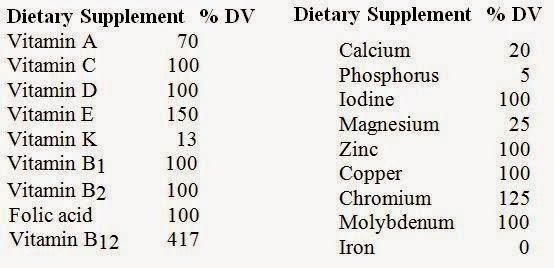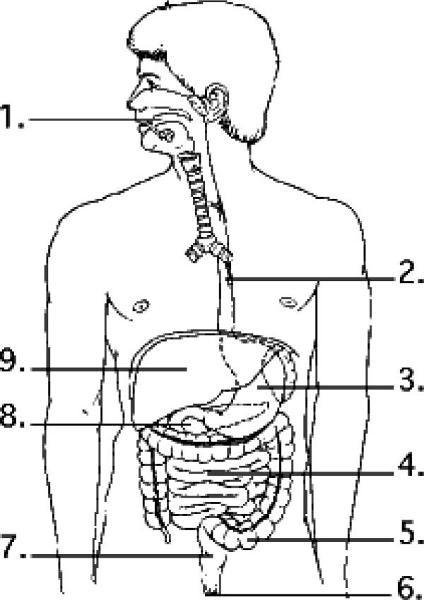Instructions for Side by Side Printing
- Print the notecards
- Fold each page in half along the solid vertical line
- Cut out the notecards by cutting along each horizontal dotted line
- Optional: Glue, tape or staple the ends of each notecard together
Campbell Biology Chapter 41 (powell_h)
front 1 1) In a well-fed human eating a Western diet, the richest source of
stored chemical energy in the body is | back 1 Answer: A |
front 2 2) Animals that migrate great distances would obtain the greatest
energetic benefit of storing chemical energy as | back 2 Answer: E |
front 3 3) Certain nutrients are considered "essential" in the
diets of some animals because | back 3 Answer: C |
front 4 4) To maintain adequate nutrition, animals require dietary access to
certain amino acids. An amino acid that is referred to as
"nonessential" would be best described as one that | back 4 Answer: A |
front 5 5) Which pair correctly associates a physiological process with the
appropriate vitamin? | back 5 Answer: B |
front 6 6) The fat-soluble vitamins include | back 6 Answer: A |
front 7 7) Which pair correctly associates a biochemical process with the
appropriate mineral associated with its use in animals? | back 7 Answer: A |
front 8 8) A general rule relating the capacity of a specific animal's
digestive system to provide adequate access to substrates for
biosynthesis of cellular components, as well as fuel molecules needed
for ATP production, is that the animal should have access to | back 8 Answer: D |
front 9  Use the following table showing the contents of a multivitamin
supplement and its percentage of recommended daily values (DV) to
answer the following questions. | back 9 Answer: D |
front 10  Use the following table showing the contents of a multivitamin
supplement and its percentage of recommended daily values (DV) to
answer the following questions. | back 10 Answer: B |
front 11  Use the following table showing the contents of a multivitamin
supplement and its percentage of recommended daily values (DV) to
answer the following questions. | back 11 Answer: D |
front 12  Use the following table showing the contents of a multivitamin
supplement and its percentage of recommended daily values (DV) to
answer the following questions. | back 12 Answer: D |
front 13  Use the following table showing the contents of a multivitamin
supplement and its percentage of recommended daily values (DV) to
answer the following questions. | back 13 Answer: C |
front 14  Use the following table showing the contents of a multivitamin
supplement and its percentage of recommended daily values (DV) to
answer the following questions. | back 14 Answer: D |
front 15 15) In marine sponges, intracellular digestion of peptides is usually
immediately preceded by | back 15 Answer: B |
front 16 16) The large surface area in the gut directly facilitates | back 16 Answer: B |
front 17 17) An advantage of a complete digestive system over a gastrovascular
cavity is that the complete system | back 17 Answer: B |
front 18 18) Earthworms, grasshoppers, and birds all have a | back 18 Answer: C |
front 19 19) Because the foods eaten by animals are often composed largely of
macromolecules, this requires the animals to have mechanisms for
| back 19 Answer: C |
front 20 20) In the digestive system, peristalsis is | back 20 Answer: E |
front 21 21) After ingestion by humans, the first category of macromolecules
to be chemically digested by enzymes in the mouth is | back 21 Answer: B |
front 22 22) Salivary amylase digests | back 22 Answer: B |
front 23 23) Among mammals, it is generally true that | back 23 Answer: C |
front 24 24) Digestive secretions with a pH of 2 are characteristic of the
| back 24 Answer: B |
front 25 25) Pepsin is a digestive enzyme that | back 25 Answer: D |
front 26 26) Upon activation by stomach acidity, the secretions of the
parietal cells | back 26 Answer: A |
front 27 27) The bile salts | back 27 Answer: C |
front 28 28) Complex nutrients are digested and then absorbed into the lymph
or bloodstream as | back 28 Answer: C |
front 29 29) An enzyme with high activity in an acidic environment is | back 29 Answer: B |
front 30 30) The absorption of fats differs from that of carbohydrates in that
the | back 30 Answer: D |
front 31 31) A nutritional monomer that can be transported in the blood after
a typical meal is | back 31 Answer: C |
front 32 32) For a nondiabetic person, the glucose concentration in this part
of the vasculature varies more than in any other part. | back 32 Answer: D |
front 33 33) Glandular secretions that are released initially as inactive
precursors of digestive enzymes are the | back 33 Answer: A |
front 34 34) Because adult lampreys attach onto the surface of large fish for
long periods of time to feed on body fluids, they can accomplish
nutritional balance without need for a | back 34 Answer: D |
front 35 35) Constipation can result from the consumption of a substance that
| back 35 Answer: B |
front 36 36) Historically inaccurate diagnosis of acid reflux disorders and
gastric ulcers has been improved by | back 36 Answer: C |
front 37 37) A hiatal hernia that disrupts the functional relationship between
the smooth muscle in the esophagus and that in the stomach would be
most likely to increase the frequency of | back 37 Answer: A |
front 38 38) A significant contribution of intestinal bacteria to human
nutrition is the benefit of bacterial | back 38 Answer: D |
front 39 39) The cells that secrete acidic fluid in the stomach are | back 39 Answer: D |
front 40 40) Stomach cells are moderately well adapted to the acidity and
protein-digesting activities in the stomach by having | back 40 Answer: B |
front 41 41) The molar teeth of herbivorous mammals are especially effective
at | back 41 Answer: C |
front 42 42) A group of animals among which a relatively long cecum is likely
to be found is the | back 42 Answer: D |
front 43 43) The adaptations suited to a carnivorous diet include | back 43 Answer: B |
front 44 44) Cattle are able to survive on a diet consisting almost entirely
of plant material because | back 44 Answer: E |
front 45 45) Analysis of jawbones from the skeletal remains of a vertebrate
animal reveal its dietary patterns owing to | back 45 Answer: B |
front 46 46) An enlarged cecum is typical of | back 46 Answer: A |
front 47 47) Coprophagy, the nutrition-boosting ingestion of fecal material,
is important for the nutritional balance of | back 47 Answer: C |
front 48 48) PKU (phenylketonuria) is a hereditary condition in which infants
and young children who ingest the amino acid phenylalanine risk
serious neurological damage. However, the risk of damage can be
substantially reduced by the severe restriction of phenylalanine in
the diet. Which of the following is the nutritional concept that forms
the basis for this preventive treatment? | back 48 Answer: B |
front 49 49) When the digestion and absorption of organic molecules results in
more energy-rich molecules than are immediately required by an animal,
the excess is | back 49 Answer: C |
front 50 50) Hypoglycemia, or low levels of glucose in the blood of a healthy
human, is "corrected" by a(n) | back 50 Answer: B |
front 51 51) A fasting animal whose energy needs exceed those provided in its
diet draws on its stored resources in which order? | back 51 Answer: C |
front 52 52) Obesity in humans is most clearly linked to | back 52 Answer: D |
front 53  53) Examine the digestive system structures in the figure above. The
agents that help emulsify fats are produced in | back 53 Answer: E |
front 54  54) Examine the digestive system structures in the figure above. The
highest rate of nutrient absorption occurs at location(s) | back 54 Answer: B |
front 55  55) Examine the digestive system structures in the figure above. Most
of the digestion of fats occurs in section(s) | back 55 Answer: B |
front 56  56) Examine the digestive system structures in the figure above.
Bacteria that produce vitamins as products are residents of location
| back 56 Answer: C |
front 57 Mouse mutations can affect an animal's appetite and eating habits.
The ob gene codes for a satiety factor, the hormone leptin. The db
gene product, the leptin receptor, is required to respond to the
satiety factor. | back 57 Answer: D |
front 58 Mouse mutations can affect an animal's appetite and eating habits.
The ob gene codes for a satiety factor, the hormone leptin. The db
gene product, the leptin receptor, is required to respond to the
satiety factor. | back 58 Answer: D |
front 59 59) Which of the following animals is incorrectly paired with its
feeding mechanism? | back 59 Answer: A |
front 60 60) The mammalian trachea and esophagus both connect to the | back 60 Answer: C |
front 61 61) Which of the following organs is incorrectly paired with its
function? | back 61 Answer: C |
front 62 62) Which of the following is not a major activity of the stomach?
| back 62 Answer: D |
front 63 63) After surgical removal of an infected gallbladder, a person must
be especially careful to restrict dietary intake of | back 63 Answer: D |
front 64 64) If you were to jog 1 km a few hours after lunch, which stored
fuel would you probably tap? | back 64 Answer: B |